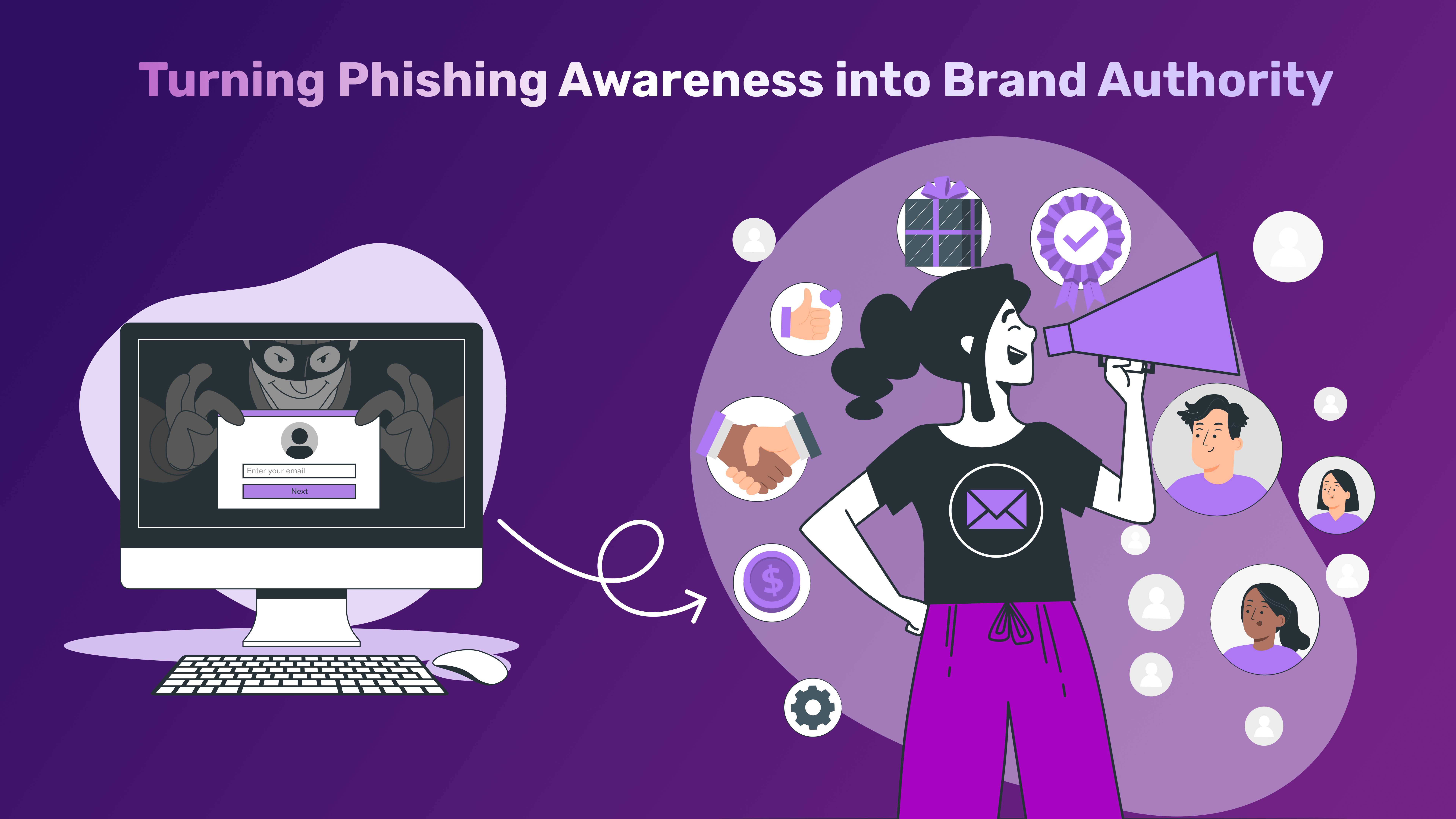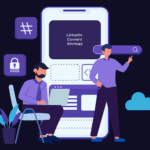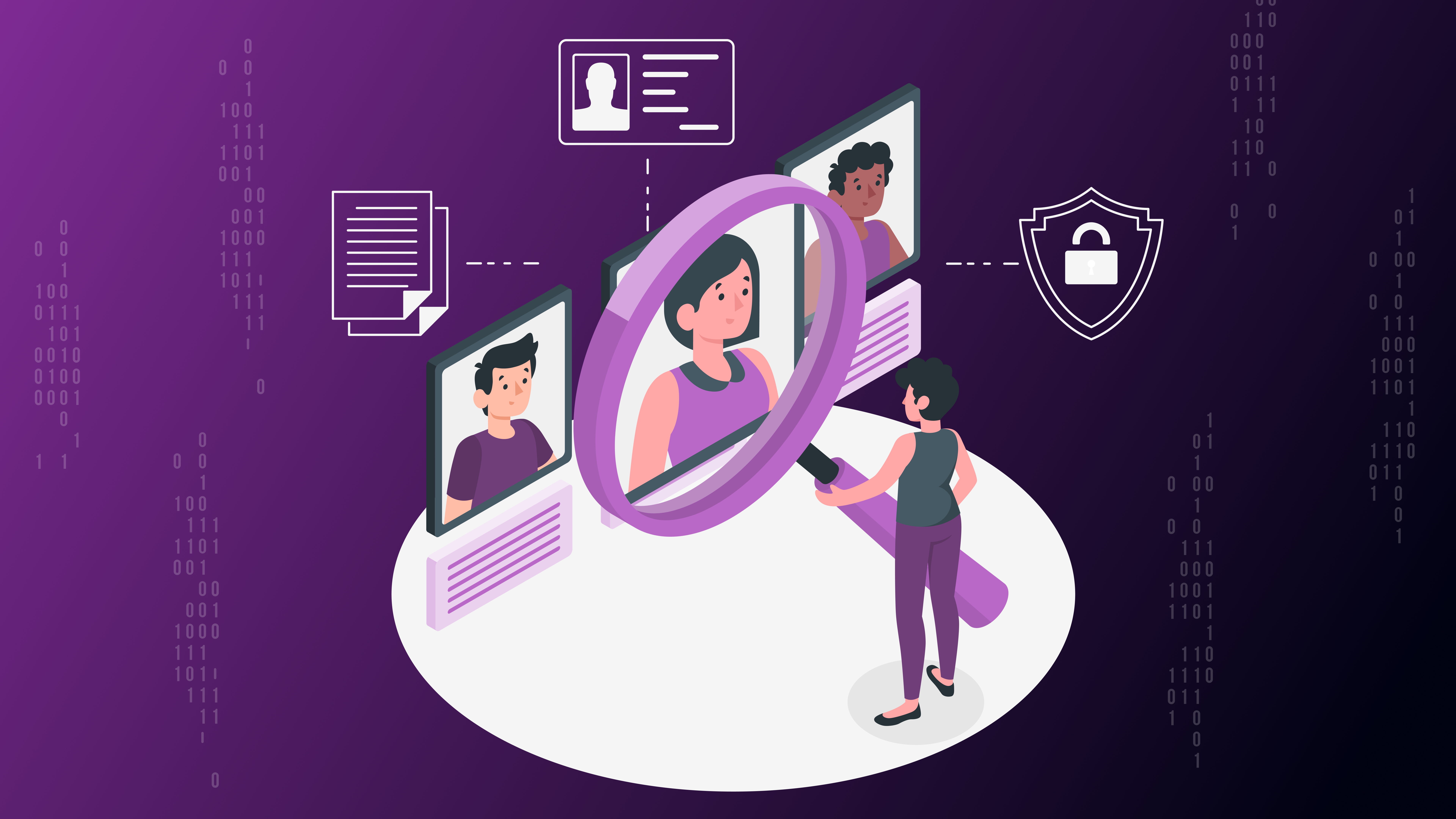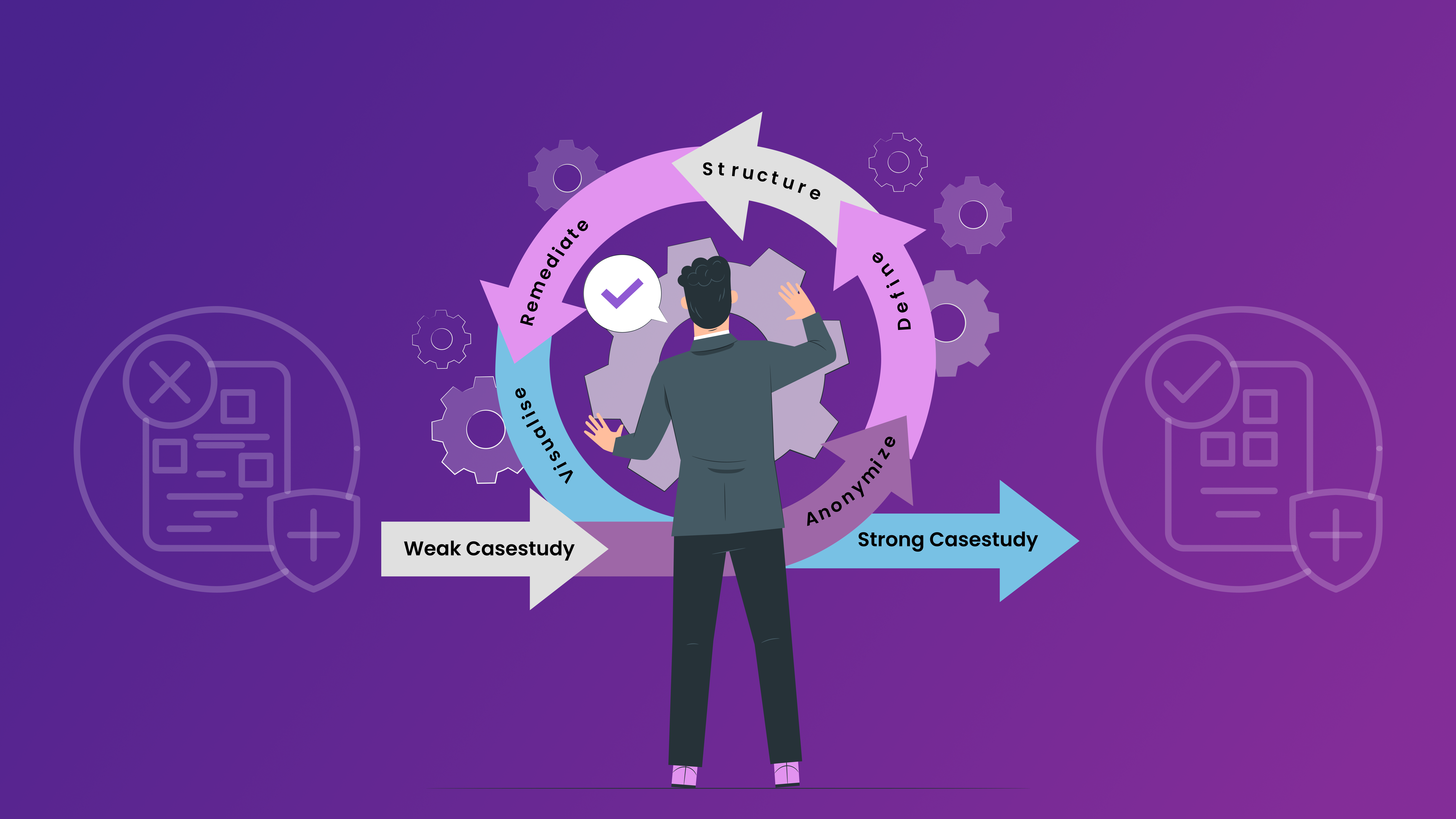Cybersecurity marketing campaigns now need to incline more towards being cybersecurity awareness campaigns. With the growing number of cyberattacks that originate from phishing or social engineering tactics, cybersecurity vendors can increase brand visibility by generating awareness through their marketing campaigns.
Phishing awareness content and social engineering education have never been more critical. High-profile breaches at Coinbase and Google show that attackers are increasingly exploiting human vulnerabilities, not just technical flaws.
In cybersecurity, the weakest link is often human awareness, making employee cybersecurity training and awareness-driven campaigns a top priority.
For startups, these awareness initiatives aren’t just about risk reduction – they’re a strategic marketing tool. Thoughtfully designed cybersecurity marketing campaigns position your company as a credible authority, generate engagement, and build brand trust with decision-makers.
Every phishing simulation, explainer video, or educational post serves a dual purpose: it teaches users to recognize threats and simultaneously establishes your startup as a thought leader in the space.
When executed strategically, awareness-driven marketing in cybersecurity delivers measurable returns. It drives organic traction, increases inbound leads, and amplifies the visibility of your brand without relying on aggressive sales tactics. In a crowded market, human risk mitigation content becomes a way to educate, engage, and convert the right audience, bridging the gap between brand authority and tangible value.
This blog explores how cybersecurity startups can leverage phishing awareness content, social engineering education, and contextual campaigns to create incremental gains in both security understanding and marketing impact.
Why Awareness Content Works in Cybersecurity Marketing Campaigns
There’s a common misconception that awareness and educational content is purely top-of-funnel. While some content introduces your brand, deep, contextual cybersecurity awareness content often functions much closer to the bottom of the funnel than client case studies themselves. The reason is simple: the more you educate your audience about phishing tactics, social engineering strategies, common risks, mitigation approaches, and internal communication policies, the more you demonstrate actual expertise and proof of work.
Unlike generic marketing posts, content that teaches your audience how to recognize and respond to real threats acts as a knowledge bank that people can refer to repeatedly. This builds credibility and trust in a way that standard case studies or product features often can’t. Every blog post, how-to video, simulation, or deep-dive guide becomes a tangible demonstration of your capability, showing your audience that your product and team can deliver results in real-world scenarios.
For cybersecurity startups, this is especially important. Buyers, such as CISOs, IT leads, compliance managers – don’t just evaluate technology; they evaluate whether your team understands their problems and can help reduce operational risk. Awareness-driven content that provides actionable insights or frameworks effectively shows that you’ve done the work and can help the organization improve its security posture.
In other words, educational content transforms from a marketing tool into a proof-of-work asset that strengthens both your brand and your credibility with potential clients.
By strategically creating content that goes beyond surface-level awareness and dives into real threats and mitigation, startups can generate engagement, reinforce trust, and move prospects closer to purchase decisions – making awareness content a powerful bottom-of-funnel asset in the cybersecurity marketing playbook.

Types of Effective Awareness Content
Once you understand that awareness content can act as a bottom-of-funnel proof of work, the next step is designing it in formats that actually engage your audience. Not all content is created equal, and in cybersecurity, the wrong type of content can be ignored or dismissed entirely. The most effective content combines education with context, making your audience more informed while reinforcing your brand authority.
Phishing simulations are one of the most direct ways to deliver value. By showing employees real-world scenarios tailored to their industry, you create learning experiences that stick. A well-designed simulation not only teaches users to recognize and report phishing attempts but also demonstrates your startup’s expertise in identifying the specific threats relevant to that sector.
These simulations are simultaneously educational tools and marketing assets, because they make your team’s knowledge and approach tangible.
How-to videos, founder-led strategic deep-dive and short tutorials are another high-impact format. They allow you to break down complex topics like social engineering, credential theft, or insider threats into digestible content. A 2–3 minute video that demonstrates a simulated attack or explains a mitigation strategy builds credibility while keeping your audience engaged. Even though LinkedIn may not inherently prioritize videos, they consistently outperform text-only posts in engagement and recall, giving your startup visibility among decision-makers.
Gamified awareness campaigns, interactive quizzes, and meme-driven content provide yet another avenue to combine learning with engagement. Employees or prospects who participate remember not just the concepts, but also your brand. Memes—when used thoughtfully—can simplify complex cybersecurity concepts, highlight real-world phishing mistakes, or humorously illustrate social engineering scenarios, making the lessons stick.
On LinkedIn, this type of content often drives tremendous engagement, sparking comments, shares, and discussions among professionals while positioning your startup as a creative and approachable thought leader in cybersecurity education. By mixing gamification, quizzes, and meme content, you increase repeat interaction and build a stronger connection with your audience.
Finally, founder stories and contextual insights should be part of your mix. Sharing the journey behind your product, lessons from previous attacks, or insights into emerging threats humanizes your brand while reinforcing credibility. Prospects engage more deeply when they understand who is behind the solution and why your team is uniquely qualified to deliver results.
When combined strategically, these content types create a layered approach: simulations and tutorials teach, gamified campaigns engage, and founder stories build trust. Together, they educate your audience, showcase your expertise, and deliver measurable marketing impact—bridging the gap between awareness, engagement, and lead conversion.
Startups Bridging the Awareness Gap
The rise in phishing and social engineering attacks has created a clear market opportunity: tools and platforms that help organizations educate users and strengthen human defenses. Several startups are innovating in this space, combining technology, behavioral science, and creative content to deliver measurable impact.
Take Cofense, for example. Cofense specializes in phishing defense by combining AI with real-time training and rapid remediation. Their solutions aim to outpace phishing threats across every channel, enhancing organizational resilience against social engineering attacks.
Similarly, Lucy Security offers a comprehensive e-learning program that includes phishing simulations, training, and testing to identify and resolve security gaps. Their platform enables organizations to take on the role of an attacker to assess and improve IT resilience effectively.
SoSafe provides security awareness training grounded in behavioral science, offering gamified, story-based modules. Their platform includes smart phishing simulations and an AI-powered security chatbot to empower teams with bite-sized learning and instant interventions.
Finally, Phish-E by P.I.V.O.T Security can be used as an additional reference. Phish-E enables organizations to run phishing simulations with real-time dashboards and targeted training modules. While not an industry benchmark, it provides a practical example of how startups are bridging the awareness gap for employees.
The common thread among these startups is contextual content. Whether it’s phishing simulations, interactive quizzes, or bite-sized video tutorials, the content is tied directly to practical outcomes. It’s actionable knowledge that employees can apply immediately, while simultaneously demonstrating the startup’s value to potential buyers.
For cybersecurity startups, this approach creates a virtuous cycle. Awareness content educates users, builds trust in the organization, and positions the startup as an authority. At the same time, it drives marketing impact: higher engagement on LinkedIn, stronger inbound leads, and a reputation for solving real-world problems in a relatable way.





